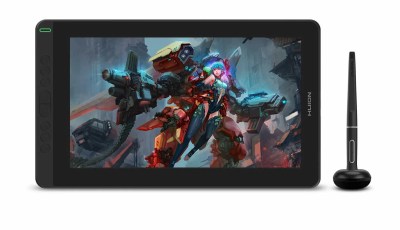Software > 3DS Max > Plugin News
Genome information update
Apr 16, 2012 by CGP Staff
12
|
Thinkbox Software has posted more information on its upcoming procedural geometry modifier plugin for Max. Genome can be used to create procedural deformation, selection and editing modifiers. It offers the added advantage of providing access to Krakatoa particle streams for mesh-particle interaction and also integrates with Thinkbox’ Frost and Xmesh plugins. Some examples of modifiers that can be created with Genome include:
– Custom Selection Modifiers – select procedurally vertices or faces based on existing mesh data channels, external geometry data channels, external object properties, nearest point and ray intersection tests, particle lookup operations, texture map evaluation, etc.
– Custom Deformation Modifiers – move vertices to produce deformations similar to the existing Bend, Twist and Push modifiers of 3DS Max, but with the full flexibility of the Magma editor.
– Custom Mapping Modifiers – generate UV coordinates based on other objects, mathematical functions etc., or manipulate existing mapping channels as if they were regular meshes.
– Data Conversion Modifiers – convert data by copying it from one channel to another within the same object.
– Data Sampling Modifiers – acquire data from external objects like meshes or particles systems and assign it to the modified object.
– Element Selection Modifiers – select mesh elements (clusters of interconnected faces) based on properties like index, area, volume etc. Useful for cleaning up fluid meshes generated by Frost, or for splitting droplets from the main fluid body.
More at Thinkbox Software.
– Custom Selection Modifiers – select procedurally vertices or faces based on existing mesh data channels, external geometry data channels, external object properties, nearest point and ray intersection tests, particle lookup operations, texture map evaluation, etc.
– Custom Deformation Modifiers – move vertices to produce deformations similar to the existing Bend, Twist and Push modifiers of 3DS Max, but with the full flexibility of the Magma editor.
– Custom Mapping Modifiers – generate UV coordinates based on other objects, mathematical functions etc., or manipulate existing mapping channels as if they were regular meshes.
– Data Conversion Modifiers – convert data by copying it from one channel to another within the same object.
– Data Sampling Modifiers – acquire data from external objects like meshes or particles systems and assign it to the modified object.
– Element Selection Modifiers – select mesh elements (clusters of interconnected faces) based on properties like index, area, volume etc. Useful for cleaning up fluid meshes generated by Frost, or for splitting droplets from the main fluid body.
More at Thinkbox Software.








Call me back when it can generate geometry!
“Call me back when it can generate geometry!”
Thanks for the feedback! 🙂
What kind of geometry creation do you envision? Geometry replication like in ICE (which you can already do to a large extent with FROST and point clouds), or actual procedural topology generation like in MeshSmooth / TurboSmooth / Subdivide / Tessellate? Max has relatively few procedural geometry modifiers that actually create geometry (FaceExtrude and Lattice come to mind), and some of them use splines (Garment Maker, Lathe, Sweep).
It would be useful to know which kind of geometry creation approaches you are missing that cannot be done with the existing Max toolset.
Bobo – I understand it’s currently a modifier, but I was hinting at a procedural geometry plugin where I could, for example, make my own procedural window or this kinda thing: http://www.youtube.com/watch?v=vuvXylVS6HM
Thanks, George, that was a great example!
Procedural geometry is always fun. It would be interesting if Frost supported non-uniform scaled particle data for geometry instances.
It wouldn’t be too hard to do procedural lattice networks. The verts would get a shape index for spheres, the edges, boxes. Each edge would reference two verts, store data for the distance between for the Z-scale and align itself between. Something along the lines of this: http://vimeo.com/38083836
The data is super fast to generate, but it takes a speed hit generating the geo in TP. Would love to try it in Frost, but it was scaling the entire edge box uniformly based on the biggest value.
Strand tools would also be welcome. Generate the minimum number of particles to define a curve and procedurally generate meshes that interpolate smoothly between them. It would need to only mesh between particles sharing the same master channel so crossing strands wouldn’t blend together. I imagine it would also need to have another channel to store the order of meshing.
On the Genome side, do you know if it is possible to do something along the lines of the old selection cache modifier? Like a volume select that would preserve the selection state once activated (or specifically told to deactivate)?
My guess is that it would need to look at the selection of the previous frame and keep already selected verts active even if the current condition is no longer valid.
Just some thoughts…everything is looking very cool so far. 🙂
Hey Bobo, heres another one – i’ve been wanting to make a “regular slice” modifier that iteratively creates slices along an axis with a certain spacing. It would make a lot of sense if Genome could do this!
Would be interesting to split polys/faces one day, so for example you could refine a surface based on the face angles automatically…
Regarding topology changes – yes, polygon support and splitting / cutting polygons are on the Wishlist. That being said, I have had significant success with Slice modifiers in production, so I never really missed that in Max. The first version of Genome was mainly inspired by the many individual procedural modifiers people at Frantic Films had written over the years to do trivial things like copying channels between objects, converting selection to colors, selecting elements by area/volume etc. The rest of its capabilities was mostly a side effect of the existing Magma features in Krakatoa.
Thank you all very much for the feedback!
We have a bunch of exciting new examples done with Genome and XMesh that I will be showing at the NY Max User Group next week. We will post more about them when we come back… Stay tuned!
@Bobo – How do you guys compare Genome to a similar-looking product currently being developed by Ephere (Cortex). Do you feel it targets the same purposes and audience, or has virtues and characteristics of its own?
Would it be possible to create soft selections with anisotropic falloffs or from localized textures or is Genome at the moment mainly capable to interact with an existing geometry pipeline?
“Would it be possible to create soft selections with anisotropic falloffs or from localized textures or is Genome at the moment mainly capable to interact with an existing geometry pipeline?”
Genome is channel-oriented. So when you are setting the vertex Selection, you operate on a channel like you operate on all other channels. This is different from how Max normally calculates SS by taking the “hard” selection and selecting surrounding vertices using the falloff settings. In fact Genome goes the opposite way – you provide the Soft Selection values, and it builds a “hard selection” bitarray by finding the values exactly equal to 1.0 (in order to support Max modifiers that don’t support Soft Selection and expect true or false only).
What Genome does is more akin to the Paint Soft Selection in EPoly, except that you “paint by numbers” by setting each vertex’ Selection channel to a floating point number procedurally instead of using a brush. Thus, what you can do with Soft Selections depends only on what you can express in a Magma flow. Btw, the Max Vol.Select using a Map to select vertices produces the same results as a Genome modifier wired to do the same (except Genome is faster), but you would have a lot of additional possibilities if you want to tweak the result, while the Vol.Select disables its Soft-Selection controls in that mode and the result depends completely on the incoming texel values.
Can you please explain what you mean by “localized textures”?
Also, wouldn’t it be easier if we had these discussions on the dedicated Thinkbox forums? http://forums.thinkboxsoftware.com
Entering comments here is a bit limiting since I cannot attach images or examples… 😉
Genome sounds like a great expansion for max. I’d be excited to play with it. Before that is love to see some feature videos of what it can actually do. I’ve read quite a bit on it, being an artist an all I’m all for visuals. When could we be expecting to see some feature videos for genome.
Great work Bobo.
– JokerMartini